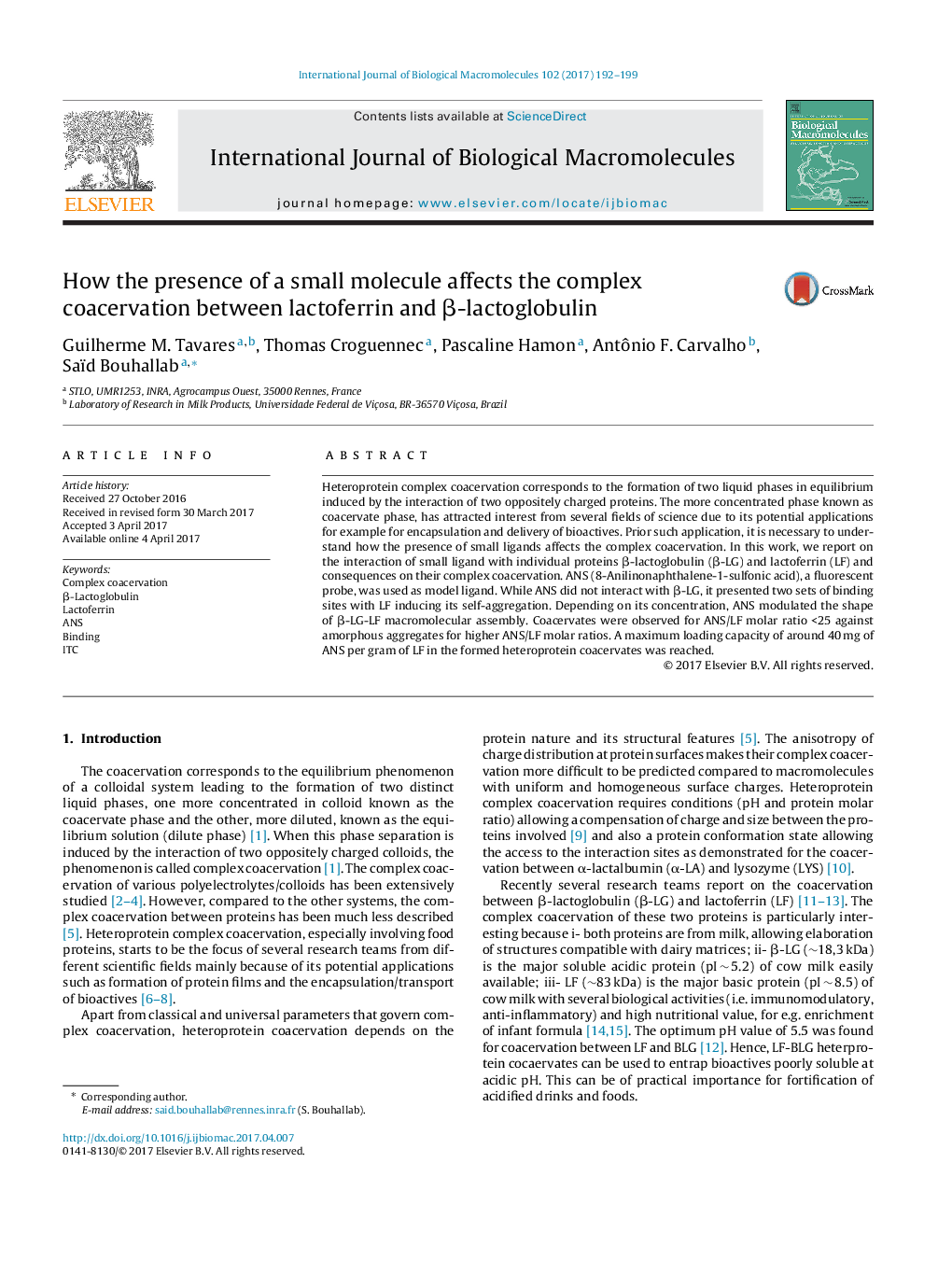| Article ID | Journal | Published Year | Pages | File Type |
|---|---|---|---|---|
| 5511742 | International Journal of Biological Macromolecules | 2017 | 8 Pages |
Abstract
Heteroprotein complex coacervation corresponds to the formation of two liquid phases in equilibrium induced by the interaction of two oppositely charged proteins. The more concentrated phase known as coacervate phase, has attracted interest from several fields of science due to its potential applications for example for encapsulation and delivery of bioactives. Prior such application, it is necessary to understand how the presence of small ligands affects the complex coacervation. In this work, we report on the interaction of small ligand with individual proteins β-lactoglobulin (β-LG) and lactoferrin (LF) and consequences on their complex coacervation. ANS (8-Anilinonaphthalene-1-sulfonic acid), a fluorescent probe, was used as model ligand. While ANS did not interact with β-LG, it presented two sets of binding sites with LF inducing its self-aggregation. Depending on its concentration, ANS modulated the shape of β-LG-LF macromolecular assembly. Coacervates were observed for ANS/LF molar ratio <25 against amorphous aggregates for higher ANS/LF molar ratios. A maximum loading capacity of around 40 mg of ANS per gram of LF in the formed heteroprotein coacervates was reached.
Related Topics
Life Sciences
Biochemistry, Genetics and Molecular Biology
Biochemistry
Authors
Guilherme M. Tavares, Thomas Croguennec, Pascaline Hamon, Antônio F. Carvalho, Saïd Bouhallab,
